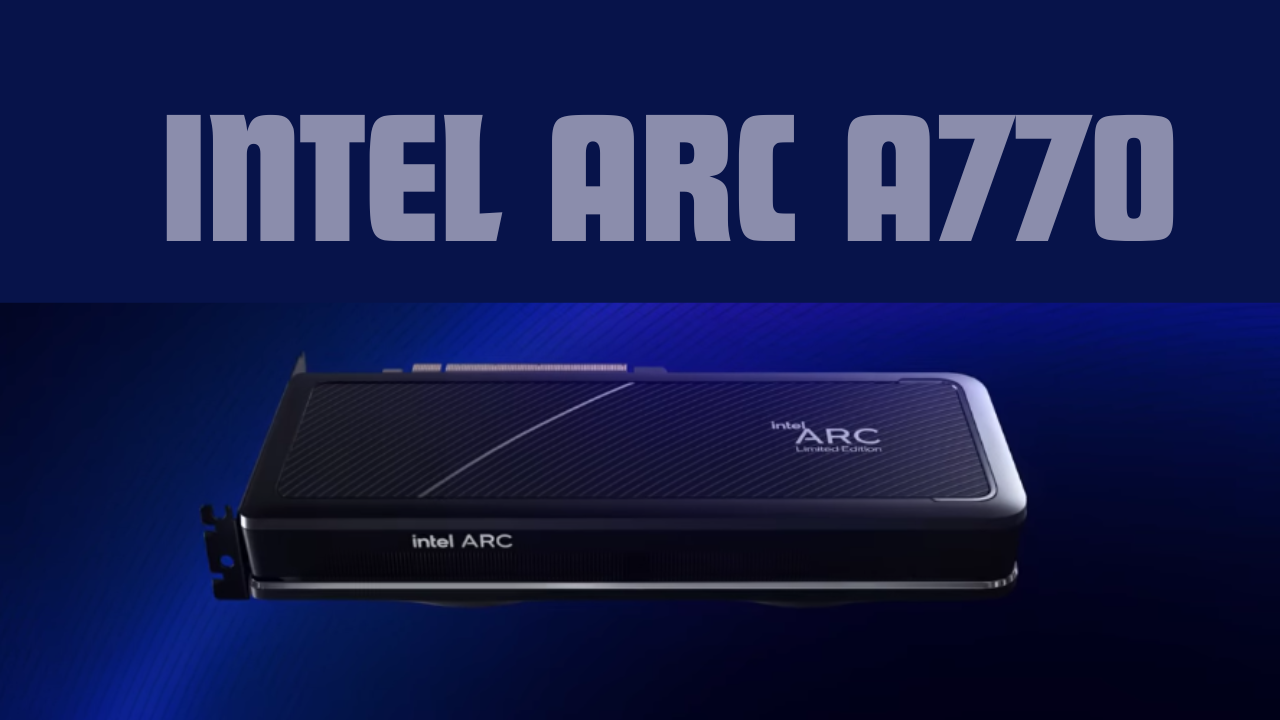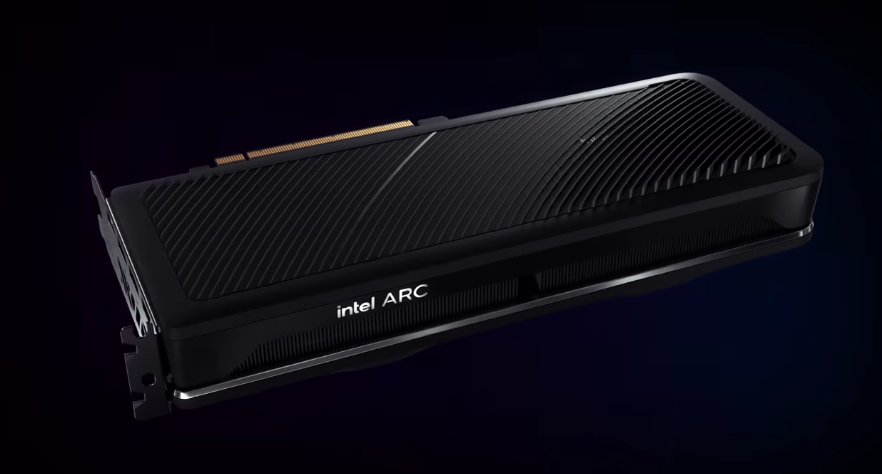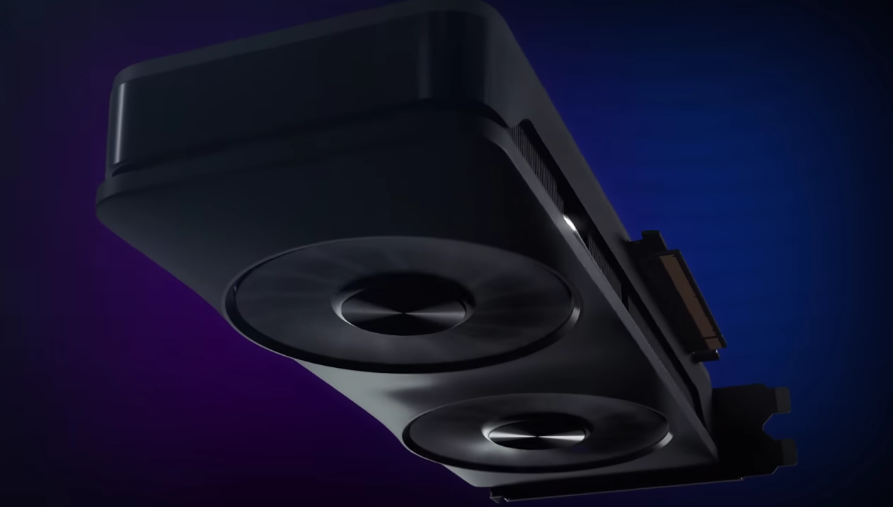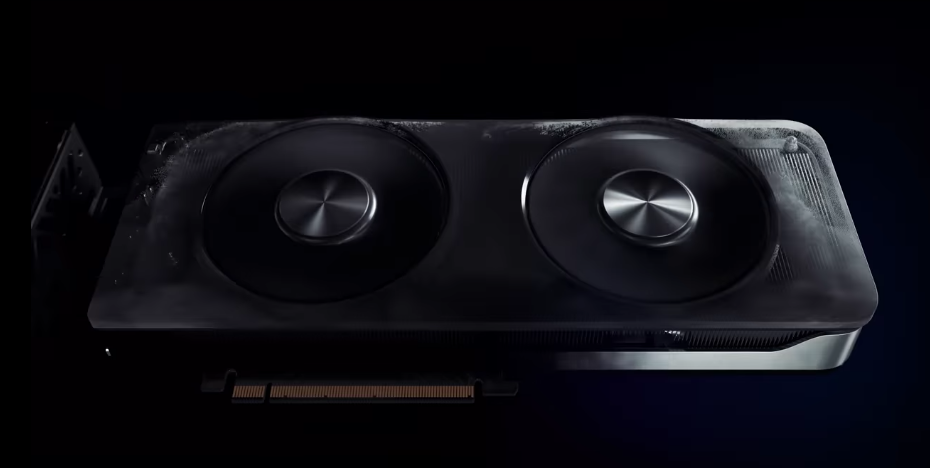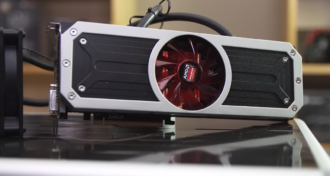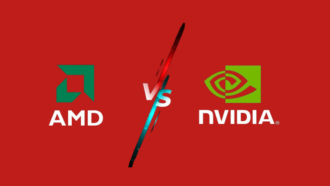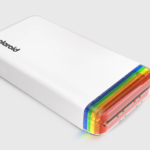Intel Arc A770 Review: A Budget 1440p GPU Contender
- 1 Intel Arc A770 Specifications
- 1.1 Intel Arc A770: Overview
- 1.2 Design – Sleek Reference Cooler
- 1.3 Performance – Solid for 1440p Gaming
- 1.3.1 1080p Performance
- 1.3.2 1440p Performance
- 1.3.3 4K Performance
- 1.4 Features – XeSS is Promising
- 1.5 Overclocking – Limited Headroom
- 1.6 Price and Availability
- 1.7 Pros and Cons Of Intel Arc A770?
- 2 Should I Buy an Intel Arc A770?
- 3 Frequently Asked Questions
- 3.1 How does the Intel Arc A770 compare against the Nvidia RTX 3060?
- 3.2 Is the Intel Arc A770 good for gaming at 1440p?
- 3.3 Can you play games at 4K with the Intel Arc A770?
- 3.4 How does XeSS compare to Nvidia DLSS?
- 3.5 Does the Intel Arc A770 support ray tracing?
- 3.6 Can you stream games with the Intel Arc A770?
In Shorts:
- The Intel Arc A770 is Intel’s first discrete desktop GPU aimed at the midrange market. Priced starting at $329, it goes up against Nvidia’s RTX 3060 and AMD’s RX 6600 XT.
- The Intel Arc A380, announced earlier this year, was intriguing, but its low performance wouldn’t win AMD or Nvidia customers.
- However, the Intel Arc A770 Limited Edition ($329 with 8GB of RAM; $349 in our 16GB test model) may be enough to lure early Team Blue adopters.
- Our testing shows the A770 delivers solid 1440p performance in modern games, albeit with some driver quirks.
Despite a difficult start, the Intel Arc A770 has enjoyed a good run since its October 12, 2022 introduction. This is one of the finest affordable graphics cards for 1440p gaming. It’s affordable and performs well at 1440p for most contemporary PC games we’ll play. Like my Intel Arc A750 review earlier this year, the card struggles with older DirectX 9 and 10 games, which lowers its total score. This is unfortunate, as this card will surprise many people who wrote it off six months ago for games produced in the last five or six years.
Intel Arc A770 Specifications
| Board Power or TDP | 225 |
| Card Length | 11 |
| Card Width | double |
| DisplayPort Outputs | 3 |
| GPU Base Clock | 2100 |
| Graphics Memory Amount | 16 |
| Graphics Memory Type | GDDR6 |
| Graphics Processor | Intel DG2-512 |
| HDMI Outputs | 1 |
| Number of Fans | 2 |
| Power Connector(s) | 1 6-pin, 1 8-pin |
Intel Arc A770: Overview
The Intel Arc A770 comes in two memory configurations:
- 8GB GDDR6: $329 MSRP
- 16GB GDDR6: $349 MSRP
It features the ACM-G10 GPU based on Intel’s Xe-HPG architecture with 4096 shader cores and 32 ray tracing cores. The 16GB model we tested has a 17.5Gbps memory speed and 559 GB/s bandwidth. The Arc A770 delivers solid performance at 1080p and 1440p in modern games utilising DirectX 12 and Vulkan. It lags in DX9/DX10 titles and ray tracing workloads. The GPU struggles at 4K resolution without upscaling.
Design – Sleek Reference Cooler
Our Intel Arc A770 review unit came with the Limited Edition reference cooler featuring an all-black shroud with silver accents. The dual-axial fans and aluminium heatsink keep temps reasonable under load. The card has an 11.02-inch length and takes up two expansion slots. Power is provided via one 8-pin and one 6-pin connector. The outputs include 3x DisplayPort 2.0 and 1x HDMI 2.1. The reference card looks quite sleek and minimalist. AIB partner cards will offer different cooling solutions and form factors.
Performance – Solid for 1440p Gaming
We tested the Intel Arc A770 16GB variant in our benchmarking suite at three resolutions:
1080p Performance
At 1080p, the Arc A770 averaged 103 fps across 24 modern games at maximum settings without ray tracing/upscaling. It falls behind the RTX 3060 Ti but matches the RX 6600 XT.
With ray tracing enabled, the average drops to 41 fps, which is playable but not ideal. Using XeSS balanced upscaling improves this to 66 fps. The A770 struggles in DX9/DX10 era games like Crysis and Bioshock Infinite, a driver optimisation issue Intel is working on.
1440p Performance
At 2560 x 1440, the card averaged 78 fps at native res across our test suite. The minimum fps stayed above 40, indicating smooth gameplay. Ray tracing cuts the averages to 29 fps even with XeSS. The A770 isn’t built for maxed-out ray tracing at 1440p. But with some settings adjustment, you can achieve 60 fps+ frame rates.
4K Performance
Expect less 4K performance from the A770 – the averages at 3840 x 2160 are only 46 fps without ray tracing and 24 fps with it. XeSS upscaling improves this to 33 fps, but it’s still not playable. The card’s 8GB VRAM is also limited to 4K textures. The A770 is best suited for 1080p and 1440p gaming.
Features – XeSS is Promising
The Arc A770 introduces Intel’s new Xe Super Sampling (XeSS) technology for AI upscaling. It uses the GPU’s dedicated Matrix Cores and works similarly to Nvidia DLSS. In our testing, XeSS provided a 1.5X performance boost over native resolution and looked comparable in image quality. DLSS is more refined than it is but shows good potential. Other notable features include complete hardware AV1 encode/decode support, DisplayPort 2.0 outputs, and good open-source Linux drivers.
Overclocking – Limited Headroom
The reference A770 is power-limited for overclocking. We achieved a stable 105MHz core and 300MHz memory OC, adding 2-3 fps. AIB models with better power delivery may offer more OC headroom. Undervolting also helps increase clocks while staying within the 225W power limit.
Expect around 5-10% max performance uplift from overclocking. The A770 already pushes high clocks out of the box.
Price and Availability
The Intel Arc A770 is available in two variants in the US, UK, and Australia: one with 16GB GDDR6 VRAM and an official US MSRP of $349 (about £280/AU$510) and another with 8GB and $329. Yes, those are the initial MSRPs as of October 2022, but in the year after their introduction, the cards’ prices have decreased dramatically.
Each card is available for 20% to 25% less. This is crucial since, although prices are comparable to those of the 16GB Arc A770 cards, the Nvidia GeForce RTX 4060 and AMD Radeon RX 7600 provide advantages that may persuade buyers to select the latter. Despite being a last-generation card, Intel’s Arc A770 outperforms modern midrange cards in terms of performance. The 16GB variant is the only 1440p card available at this price, even when comparing the AMD Radeon RX 6750 XT with Nvidia’s last-generation RTX 3060 Ti. This card fills a crucial niche for 1440p gamers on a tight budget—it’s the only one.
Note: This card is the finest inexpensive 1440p card available because of its excellent 1440p performance considering its price. Although this card can’t play games at 4K resolution as the finest 4K graphics cards can, with the correct settings, you can play games at 4K on the 16GB VRAM version thanks to its big memory pool.
Pros and Cons Of Intel Arc A770?
| PROS | CONS |
| Great 1080p performance | Lacks support for older DX9/DX10 games |
| Solid 1440p gameplay for most modern titles | Ray tracing performance is limited |
| 16GB VRAM enables 4K on optimised games | High 225W power consumption |
| XeSS shows promise against Nvidia DLSS | |
| Quiet and effective cooling |
Should I Buy an Intel Arc A770?
The A770 is a good option for 1080p high-refresh gaming and 1440p 60+ fps on optimised titles. It can’t keep up with the RTX 4060 Ti in some workloads but costs considerably less. Intel is still ironing out optimisations for older games and ray tracing. At launch pricing, the A770 provides good bang for the buck that will only improve over time.
Frequently Asked Questions
How does the Intel Arc A770 compare against the Nvidia RTX 3060?
The A770 generally matches or exceeds the RTX 3060 in traditional rasterisation but lags in tracing. It offers comparable raw performance for less money but needs Nvidia’s software maturity.
Is the Intel Arc A770 good for gaming at 1440p?
Yes, the A770 provides a solid 1440p gaming experience in most modern DirectX 12 and Vulkan titles. It can comfortably drive 1440p displays at over 60 fps high or ultra settings without ray tracing.
Can you play games at 4K with the Intel Arc A770?
The 16GB A770 can handle some lighter games at 4K, thanks to its large VRAM buffer. But most intensive AAA games require resolution upscaling to be playable at 4K. The card is best suited for 1080p and 1440p resolutions.
How does XeSS compare to Nvidia DLSS?
Intel’s new XeSS AI upscaling shows significant promise in early testing. Image quality and performance uplift are close to DLSS 2.0. It lacks DLSS 3’s frame generation but provides an alternative to FSR for Intel GPUs.
Does the Intel Arc A770 support ray tracing?
Yes, the A770 GPU has dedicated ray-tracing cores. It can run ray-traced games but needs to provide sufficient performance for maxed-out ray tracing. Lightray tracing settings are playable.
Can you stream games with the Intel Arc A770?
Yes, the A770 has complete hardware AV1 encoding support, which is more efficient than CPU encoding. This allows high-quality game streaming with minimal performance impact.

